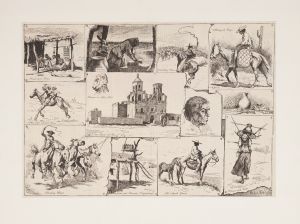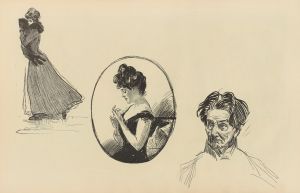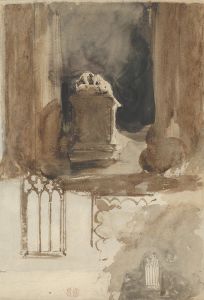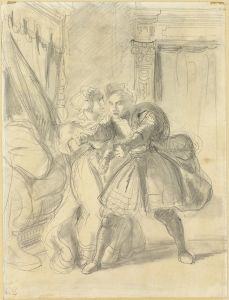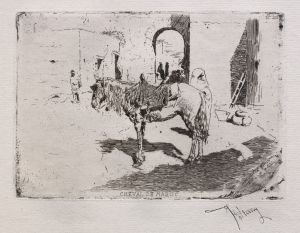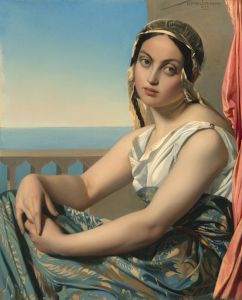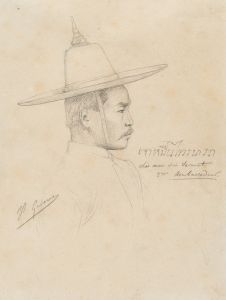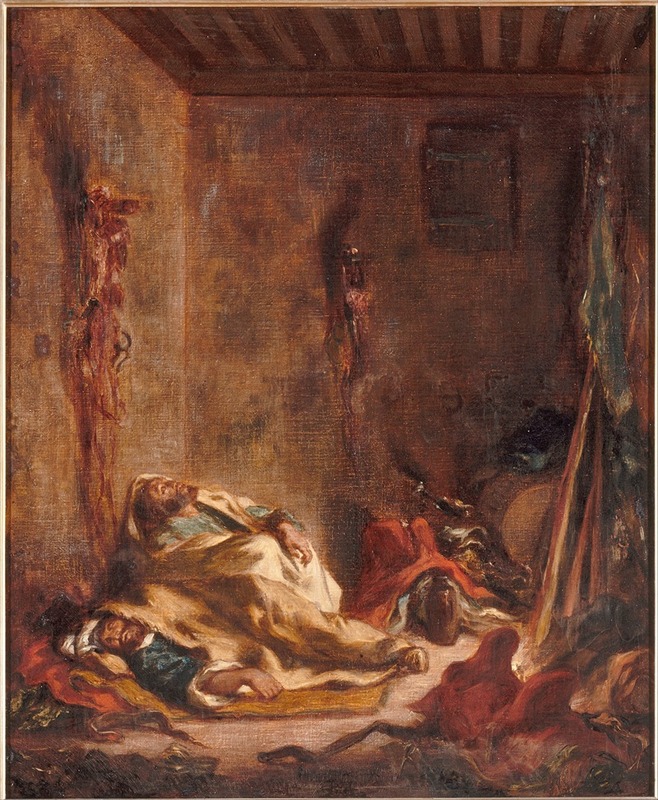
Le corps de garde à Meknès
A hand-painted replica of Eugène Delacroix’s masterpiece Le corps de garde à Meknès, meticulously crafted by professional artists to capture the true essence of the original. Each piece is created with museum-quality canvas and rare mineral pigments, carefully painted by experienced artists with delicate brushstrokes and rich, layered colors to perfectly recreate the texture of the original artwork. Unlike machine-printed reproductions, this hand-painted version brings the painting to life, infused with the artist’s emotions and skill in every stroke. Whether for personal collection or home decoration, it instantly elevates the artistic atmosphere of any space.
Eugène Delacroix, a prominent French Romantic artist, is renowned for his vibrant use of color and expressive brushwork. Among his extensive body of work, "Le corps de garde à Meknès" stands out as a significant piece that reflects his fascination with North African culture. Painted in 1847, this artwork is part of Delacroix's broader exploration of Orientalist themes, which were inspired by his travels to Morocco in 1832.
Delacroix's journey to Morocco was part of a diplomatic mission, and it left a profound impact on his artistic vision. The experience provided him with a wealth of visual and cultural material that he would draw upon for the rest of his career. His time in Morocco allowed him to observe and document the local customs, architecture, and landscapes, which he meticulously recorded in his sketchbooks and journals. These observations later informed many of his paintings, including "Le corps de garde à Meknès."
The painting depicts a scene in the city of Meknès, one of Morocco's historic imperial cities. Meknès was known for its impressive architecture and vibrant street life, elements that Delacroix captured with great attention to detail. In "Le corps de garde à Meknès," Delacroix portrays a group of guards, likely part of the city's military presence, stationed at a guardhouse. The composition is characterized by its dynamic arrangement of figures and the interplay of light and shadow, which are hallmarks of Delacroix's style.
Delacroix's use of color in this painting is particularly noteworthy. He employs a rich palette to convey the warmth and intensity of the Moroccan environment. The earthy tones and vivid hues reflect the natural and architectural elements of Meknès, while also enhancing the dramatic effect of the scene. This approach to color was influential in the development of later artistic movements, such as Impressionism, which valued the emotive potential of color.
The painting also exemplifies Delacroix's interest in the human figure and his ability to capture the nuances of gesture and expression. The guards are depicted with a sense of realism and individuality, each figure contributing to the overall narrative of the scene. Delacroix's attention to detail in rendering the clothing and accoutrements of the guards further adds to the authenticity and depth of the work.
"Le corps de garde à Meknès" is a testament to Delacroix's skill as a painter and his ability to convey the essence of a place and its people. It reflects his admiration for the diversity and richness of Moroccan culture, which he approached with both curiosity and respect. This painting, along with others from his Moroccan series, played a significant role in shaping Western perceptions of North Africa during the 19th century and contributed to the broader Orientalist movement in art.
Today, Delacroix's works, including "Le corps de garde à Meknès," continue to be celebrated for their artistic innovation and cultural significance. They offer a window into the past, providing insight into the historical interactions between Europe and North Africa and the enduring influence of these encounters on the art world.





